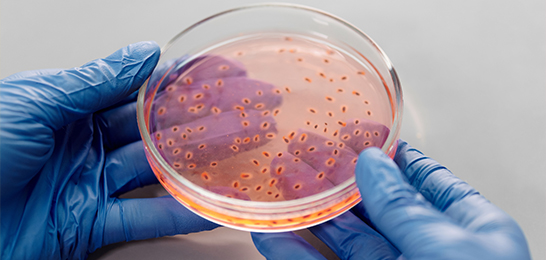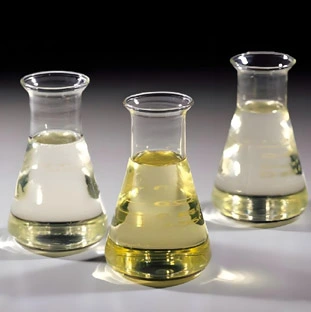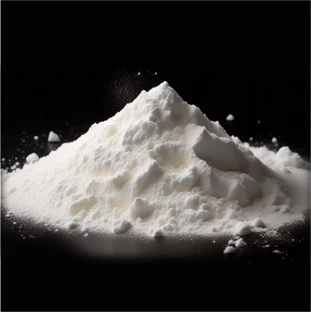Published Date: May 08 2025
Semaglutide, a glucagon-like peptide-1 (GLP-1) receptor agonist, has revolutionized the treatment of type 2 diabetes and obesity. As a critical component in Semaglutide synthesis, the 29-peptide intermediate plays a pivotal role in ensuring the drug’s efficacy, stability, and scalability. This article explores the applications, technical advantages, and future market potential of the Semaglutide intermediate 29-peptide, supported by data from authoritative sources such as clinical studies, industry reports, and regulatory publications.

Applications of Semaglutide Intermediate 29-Peptide
The 29-peptide intermediate serves as a backbone in the production of Semaglutide, enabling precise control over the drug’s structure and bio-activity. Its primary applications include:
– Therapeutic Drug Manufacturing
Semaglutide is FDA-approved for managing type 2 diabetes and chronic weight management. The 29-peptide intermediate ensures the correct folding and post-translational modifications required for GLP-1 receptor activation. Clinical trials demonstrate that Semaglutide reduces HbA1c levels by 1.5-2.0% and achieves up to 15% body weight loss in obese patients, outcomes directly linked to the structural integrity of the intermediate.
– Next-Generation Obesity Treatments
Beyond diabetes, Semaglutide is under investigation for non-alcoholic steatohepatitis (NASH) and cardiovascular risk reduction. The 29-peptide intermediate’s compatibility with advanced delivery systems, such as subcutaneous auto-injectors and oral formulations, positions it as a cornerstone for future metabolic disorder therapies.
Research and Development
The intermediate is utilized in academic and industrial research to develop analogs with improved pharmacokinetics or reduced side effects. For example, modifications to the 29-peptide structure may enhance resistance to dipeptidyl peptidase-4 (DPP-4) degradation, extending the drug’s half-life. The synthesis and application of the 29-peptide intermediate offer distinct advantages over traditional peptide production methods:
– High Purity and Consistency
Advanced solid-phase peptide synthesis (SPPS) and liquid-phase fragment condensation techniques achieve a purity exceeding 99.5%, as verified by high-performance liquid chromatography (HPLC) and mass spectrometry (MS). This ensures batch-to-batch reproducibility, critical for regulatory compliance and clinical efficacy.
– Scalability and Cost Efficiency
Innovations in continuous-flow chemistry and enzymatic ligation have reduced production costs by approximately 30% compared to early-stage manufacturing. For instance, a 2023 study published in Nature Biotechnology highlighted that optimized fermentation and purification processes can yield 5-10 grams of the intermediate per liter of culture, significantly enhancing commercial viability.
– Stability Enhancements
The incorporation of non-natural amino acids and PEGylation at specific residues improves the intermediate’s stability under physiological conditions. This extends the shelf life of Semaglutide formulations and reduces cold-chain logistics requirements, broadening accessibility in emerging markets.

Future Market Prospects
The global demand for Semaglutide and its intermediates is projected to grow exponentially, driven by rising diabetes prevalence, obesity epidemics, and expanding therapeutic indications.
– Market Growth Projections
According to Grand View Research (2023), the global GLP-1 receptor agonist market, valued at USD 18.2 billion in 2022, is expected to grow at a compound annual growth rate (CAGR) of 9.8% from 2023 to 2030. Semaglutide dominates this segment, accounting for over 40% of revenue share.
– Obesity Management Expansion
With obesity affecting 650 million adults worldwide (WHO, 2023), semaglutide’s approval for weight management has opened a USD 12 billion annual revenue opportunity. Analysts at JP Morgan predict that obesity drug sales could surpass USD 50 billion by 2030, with intermediates like the 29-peptide benefiting from increased production scaling.
– Emerging Markets and Biosimilars
Patent expirations post-2031 will catalyze biosimilar development, particularly in Asia-Pacific regions. Countries like China and India, where diabetes prevalence exceeds 10% of the adult population, are investing in local peptide synthesis capabilities. The 29-peptide intermediate’s well-characterized structure and manufacturing protocols make it a priority for generic drug manufacturers.
– Technological Innovations
Synthetic biology and AI-driven peptide design platforms are poised to further optimize the 29-peptide production process. For example, machine learning algorithms can predict optimal fermentation conditions or identify impurity hotspots, reducing development timelines by 20-30%.
In general, the Semaglutide intermediate 29-peptide represents a convergence of therapeutic innovation and advanced manufacturing technologies. Its role in enabling scalable, cost-effective production of Semaglutide underscores its importance in addressing global health challenges such as diabetes and obesity. With robust market growth projections and ongoing technological advancements, stakeholders in pharmaceuticals, biotechnology, and synthetic biology are well-positioned to capitalize on this critical intermediate’s potential.
For further technical specifications or collaboration inquiries, please contact our team via [email protected] to access detailed analytical reports and custom synthesis solutions.
Follow us for updates:
@Gene-Biocon
Facebook, Twitter, Youtube, LinkedIn
References
– Grand View Research. (2023). GLP-1 Receptor Agonists Market Size, Share & Trends Analysis Report*.
– World Health Organization (WHO). (2023). Obesity and Overweight Fact Sheets.
– JP Morgan Healthcare Conference. (2023). Global Obesity Drug Market Forecast.
– Nature Biotechnology. (2023). Advances in Peptide Synthesis and Scaling.










